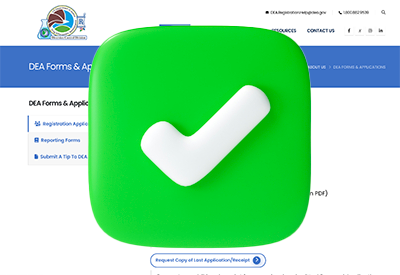Home » The Psychosis Prodrome
The Psychosis Prodrome
January 1, 2013
From The Carlat Psychiatry Report
Rachel Loewy, PhD
Assistant adjunct professor, University of California, San Francisco
Dr. Loewy has disclosed that they have no relevant relationships or financial interests in any commercial company pertaining to this educational activity.
Demian Rose, PhD, MD
Assistant clinical professor, University of California, San Francisco
Dr. Rose hase disclosed that they have no relevant relationships or financial interests in any commercial company pertaining to this educational activity.
Nearly all psychiatrists have met with an adolescent or young adult patient who was depressed and anxious, with some odd ideas or experiences—no florid psychosis, but perhaps with a family history of psychosis—and wondered, “Is this patient headed for schizophrenia?” Similarly, most clinicians have seen patients with schizophrenia who went without treatment for the first few years of their disorder and wondered, “Might this person be less impaired if he or she had received treatment earlier?”
At the crossroads of these experiences lies the concept of the psychosis prodrome and early intervention/prevention efforts. But without evidence of a florid psychotic episode, when should one intervene? With whom? How? These questions are still under active research across the globe and were recently debated hotly during the development of the DSM-5. In this article, we hope to walk you through some of the most recent evidence in treating prodromal psychosis, or the “clinical high risk” The Definition of Clinical High Risk (CHR) syndrome.
The Definition of Clinical High Risk
In 1996, Drs. Patrick McGorry and Alison Yung published a definition of the psychosis prodrome based on the first symptoms described in retrospective interviews with schizophrenia patients and family members (Yung AR and McGorry PD, Schizophr Bull 1996;22(2):353–370). Sixteen years later, this definition has been used in hundreds of studies to identify and follow CHR patients over time. The two largest studies to date found a similar rate of transition to full psychosis—35% over 2.5 years—with diminishing transition rates over time, but some occurring as far as 10 years later (Fusar Poli P et al, Arch Gen Psychiatry 2012;69(3):220–229). In this literature, “full psychosis” is defined as complete loss of insight and full conviction in hallucinations and delusions, occurring in both primary psychotic disorders such as schizophrenia and also primary mood disorders such as major depressive or bipolar disorders with psychotic features.
The CHR “attenuated psychosis syndrome” requires repeated sub-threshold hallucinations or delusions with no full conviction that experiences are real, occurring at least weekly, with recent onset or worsening, and causing distress or impairment. This syndrome was the prototype for the now-rejected DSM-5 diagnosis.
These distinctions between full and attenuated psychosis are somewhat arbitrary, of course, and may differ from the way these terms are used in typical clinical practice, where patients present with symptoms existing on a continuum from mild to extremely severe. For our purposes, however, this distinction is an important one with significant implications for treatment. A clear result of research in schizophrenia suggests that reducing the “duration of untreated psychosis” (DUP) has beneficial effects for patients’ symptoms, psychosocial functioning, and quality of life. These benefits can last for decades, above and beyond future treatment success and other factors that influence prognosis. This imperative to treat full psychosis as quickly as possible raises the question of what to do in the more murky area of attenuated psychosis.
Treatment Data in the CHR Population
Only six randomized controlled trials have been conducted with the CHR population (Marshall M and Rathbone J 2011, Cochrane Database Syst Rev, (6):CD004718), most using antipsychotic medications such as risperidone (Risperdal) or olanzapine (Zyprexa) alone, or in combination with psychosocial treatments such as family interventions and cognitive behavioral therapy (CBT). Three studies showed a statistically significant difference in the rate of psychotic transition between active treatment and control groups at the end of treatment (six to 12 months), but only one continued to show a significant difference in rates of psychosis six months after treatment ended, suggesting that if there is an effect of “preventing” psychosis onset, the benefit is lost once active treatment is discontinued.
The strongest effects were actually found for CBT, omega-3 fatty acids, and combined psychosocial treatment (CBT, family treatment, skills groups, computerized cognitive training), rather than antipsychotics. And in one of the largest studies, cognitive therapy and risperidone, either alone or in combination, had no benefit for preventing psychosis onset compared to placebo. Together, these studies suggest that antipsychotic treatment may not have a significant preventative or neuroprotective effect in attenuated psychosis, though it does tend to reduce the intensity and frequency of psychotic symptoms, whether attenuated, mild, or severe. Given the especially high metabolic risks for these drugs in adolescents (Sickich L et al, Am J Psychiatry 2008;165(11):1420–1423), we would advise against their regular use in the CHR population, except in the very rare cases where the distress and/or impairment caused by a given attenuated psychotic symptom is deemed to be severe or rapidly worsening over time.
Clinical Pearls in the CHR Population
Having worked with the CHR population clinically, and having struggled to integrate the current literature with our own experience, we have identified some helpful guiding principles that we feel apply to adolescents and young adults with attenuated psychosis who have come to clinical attention:
Prevention and Recovery: The Primary Goals of CHR Intervention
Recent research suggests that psychotic transition may not be as important an outcome as functional status, which is often poor and remains quite poor for some patients with impairing negative and cognitive symptoms, despite never formally crossing the “full psychosis” threshold (Yung AR et al, Schizophr Res 2010;120(1–3):1–6). Therefore, it is often most helpful to work closely with families to provide psychoeducation and support, even with young adults, and use cognitive behavioral therapies or vocational/educational supports to improve functioning. Recent studies have shown some promise that computerized cognitive training software may improve the neurocognitive deficits that are untouched, or sometimes worsened, by antipsychotic medications (Barlati S et al, Curr Pharm Des 2012;18(4):534–541).
TCPR’s Verdict: One of the most important aspects of treating this population is providing safety, support, and hope. Many of us unintentionally communicate our fear of providing a schizophrenia diagnosis to a young person, based on experiences with the devastating outcomes for the worst cases. However, there is now evidence to suggest that recovery is possible with early and rigorous intervention to return a young person back to functioning after the onset of psychosis.
For those practicing near a CHR research center, we highly recommend taking advantage of their diagnostic and treatment services for your patients, or simply for consultation (www.schizophrenia.com/earlypsychosis.htm#clinics). For those in the San Francisco Bay Area, you can reach us at 415-476-7278.
General PsychiatryAt the crossroads of these experiences lies the concept of the psychosis prodrome and early intervention/prevention efforts. But without evidence of a florid psychotic episode, when should one intervene? With whom? How? These questions are still under active research across the globe and were recently debated hotly during the development of the DSM-5. In this article, we hope to walk you through some of the most recent evidence in treating prodromal psychosis, or the “clinical high risk” The Definition of Clinical High Risk (CHR) syndrome.
The Definition of Clinical High Risk
In 1996, Drs. Patrick McGorry and Alison Yung published a definition of the psychosis prodrome based on the first symptoms described in retrospective interviews with schizophrenia patients and family members (Yung AR and McGorry PD, Schizophr Bull 1996;22(2):353–370). Sixteen years later, this definition has been used in hundreds of studies to identify and follow CHR patients over time. The two largest studies to date found a similar rate of transition to full psychosis—35% over 2.5 years—with diminishing transition rates over time, but some occurring as far as 10 years later (Fusar Poli P et al, Arch Gen Psychiatry 2012;69(3):220–229). In this literature, “full psychosis” is defined as complete loss of insight and full conviction in hallucinations and delusions, occurring in both primary psychotic disorders such as schizophrenia and also primary mood disorders such as major depressive or bipolar disorders with psychotic features.
The CHR “attenuated psychosis syndrome” requires repeated sub-threshold hallucinations or delusions with no full conviction that experiences are real, occurring at least weekly, with recent onset or worsening, and causing distress or impairment. This syndrome was the prototype for the now-rejected DSM-5 diagnosis.
These distinctions between full and attenuated psychosis are somewhat arbitrary, of course, and may differ from the way these terms are used in typical clinical practice, where patients present with symptoms existing on a continuum from mild to extremely severe. For our purposes, however, this distinction is an important one with significant implications for treatment. A clear result of research in schizophrenia suggests that reducing the “duration of untreated psychosis” (DUP) has beneficial effects for patients’ symptoms, psychosocial functioning, and quality of life. These benefits can last for decades, above and beyond future treatment success and other factors that influence prognosis. This imperative to treat full psychosis as quickly as possible raises the question of what to do in the more murky area of attenuated psychosis.
Treatment Data in the CHR Population
Only six randomized controlled trials have been conducted with the CHR population (Marshall M and Rathbone J 2011, Cochrane Database Syst Rev, (6):CD004718), most using antipsychotic medications such as risperidone (Risperdal) or olanzapine (Zyprexa) alone, or in combination with psychosocial treatments such as family interventions and cognitive behavioral therapy (CBT). Three studies showed a statistically significant difference in the rate of psychotic transition between active treatment and control groups at the end of treatment (six to 12 months), but only one continued to show a significant difference in rates of psychosis six months after treatment ended, suggesting that if there is an effect of “preventing” psychosis onset, the benefit is lost once active treatment is discontinued.
The strongest effects were actually found for CBT, omega-3 fatty acids, and combined psychosocial treatment (CBT, family treatment, skills groups, computerized cognitive training), rather than antipsychotics. And in one of the largest studies, cognitive therapy and risperidone, either alone or in combination, had no benefit for preventing psychosis onset compared to placebo. Together, these studies suggest that antipsychotic treatment may not have a significant preventative or neuroprotective effect in attenuated psychosis, though it does tend to reduce the intensity and frequency of psychotic symptoms, whether attenuated, mild, or severe. Given the especially high metabolic risks for these drugs in adolescents (Sickich L et al, Am J Psychiatry 2008;165(11):1420–1423), we would advise against their regular use in the CHR population, except in the very rare cases where the distress and/or impairment caused by a given attenuated psychotic symptom is deemed to be severe or rapidly worsening over time.
Clinical Pearls in the CHR Population
Having worked with the CHR population clinically, and having struggled to integrate the current literature with our own experience, we have identified some helpful guiding principles that we feel apply to adolescents and young adults with attenuated psychosis who have come to clinical attention:
- The CHR syndrome is common, so don’t be surprised by it and don’t overreact to it. Though psychosis can, of course, become chronic and impairing, the understanding that attenuated psychotic symptoms are actually quite common and don’t always become severe can help reduce the urge to overtreat young people with medications that can cause long-term side effects.
- Psychosis is on a continuum, just like everything else. Along with the goal of avoiding over treatment, we must recognize that psychotic symptoms exist on a normal continuum of human experience, and interventions should be tailored to the particularities of the symptom clusters themselves. We recommend the staging model described by McGorry and colleagues as a guide (McGorry PD et al, Austral New Zealand J Psychiatry 2006;40(8):616–622).
- Depression and anxiety are expected. While our diagnostic nomenclature assumes that primary mood disorders are discrete from primary psychotic disorders, in our experience, the population at risk for the development of psychosis is one that is also likely to exhibit depression and anxiety. Don’t let the thought that this “might not be a ‘real’ mood disorder” stop you from treating what’s there using standard depression and anxiety treatments.
- Marijuana is a causal risk factor for the development of full psychosis. Be aware that marijuana not only worsens the course of psychosis, but for those who are at high risk, it can sometimes trigger or accelerate the course of psychosis to the point of being a causal risk factor in and of itself (Large M et al, Arch Gen Psychiatry 2011;68(6):555–561). Aggressively assess and treat marijuana use in young adults who are already exhibiting signs of attenuated psychosis.
- Childhood trauma impacts course. Like marijuana, childhood trauma is probably a causal risk factor for the eventual development of psychosis, is common in CHR patients, and may predict transition to full psychosis (Vares F et al, Psychol Med 2012;42(5):1025–1036). While patients are often assessed long after the actual traumas have occurred, it is important to screen for, validate, and treat the effects of childhood trauma in the high-risk population. Alternatively, don’t dismiss attenuated psychosis in the context of trauma as “just” trauma-related, as these patients are actually at very high risk for developing schizophrenia.
- Be on the lookout for cognitive decline. The data suggest that, by the time people with concerning symptoms come to clinical attention, many have already suffered a decline in their motivation, attention, processing speed, and verbal memory. Consider cognitive decline to be one of the most important prognostic factors in the high risk population. It is especially helpful to educate families about negative and cognitive symptoms, which are not willful behaviors.
Prevention and Recovery: The Primary Goals of CHR Intervention
Recent research suggests that psychotic transition may not be as important an outcome as functional status, which is often poor and remains quite poor for some patients with impairing negative and cognitive symptoms, despite never formally crossing the “full psychosis” threshold (Yung AR et al, Schizophr Res 2010;120(1–3):1–6). Therefore, it is often most helpful to work closely with families to provide psychoeducation and support, even with young adults, and use cognitive behavioral therapies or vocational/educational supports to improve functioning. Recent studies have shown some promise that computerized cognitive training software may improve the neurocognitive deficits that are untouched, or sometimes worsened, by antipsychotic medications (Barlati S et al, Curr Pharm Des 2012;18(4):534–541).
TCPR’s Verdict: One of the most important aspects of treating this population is providing safety, support, and hope. Many of us unintentionally communicate our fear of providing a schizophrenia diagnosis to a young person, based on experiences with the devastating outcomes for the worst cases. However, there is now evidence to suggest that recovery is possible with early and rigorous intervention to return a young person back to functioning after the onset of psychosis.
For those practicing near a CHR research center, we highly recommend taking advantage of their diagnostic and treatment services for your patients, or simply for consultation (www.schizophrenia.com/earlypsychosis.htm#clinics). For those in the San Francisco Bay Area, you can reach us at 415-476-7278.
KEYWORDS antipsychotics
Issue Date: January 1, 2013
Table Of Contents
Recommended
Newsletters
Please see our Terms and Conditions, Privacy Policy, Subscription Agreement, Use of Cookies, and Hardware/Software Requirements to view our website.
© 2025 Carlat Publishing, LLC and Affiliates, All Rights Reserved.


_-The-Breakthrough-Antipsychotic-That-Could-Change-Everything.jpg?1729528747)



